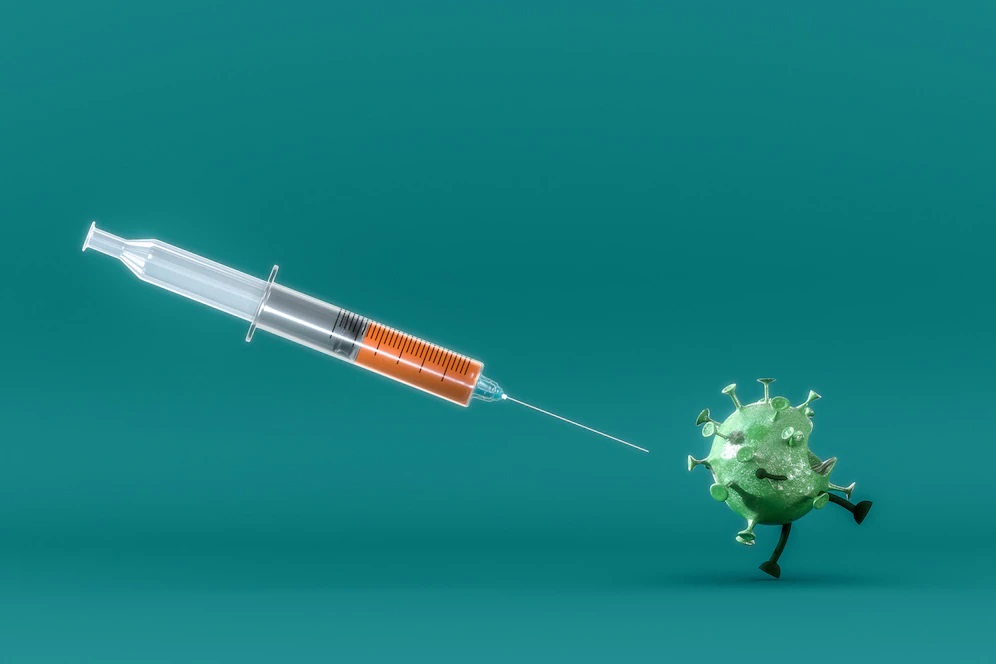Food and Drug Administration (FDA) approval of updated COVID-19 mRNA vaccines came earlier than expected this year, giving us a new weapon against the worst summer COVID surge since 2022.
On Aug. 22, the FDA approved Moderna and Pfizer’s updated mRNA COVID-19 vaccines for individuals 12 years and older. The FDA granted emergency use authorization for those six months through 11 years old.
Moderna and Pfizer say their new vaccines, which target the KP.2 variation of the COVID-19 virus, will be ready to ship in a matter of days.
The shots are usually released later in the fall. By acting now, the FDA can facilitate the availability of the vaccine at a time when wastewater measurements by the Centers for Disease Control and Prevention (CDC) show we are in the middle of a surge close to the summer peak of 2022. In fact, the current levels are the highest they’ve ever been in August and may be higher, as authorities worldwide are not tracking COVID-19 infections as closely as they did two years ago. The wastewater figures show the biggest surge we’ve ever experienced this late in the summer, which is concerning as children head back to school.
FDA approval is expected soon for another vaccine, Novavax’s protein-based COVID-19 vaccine targeting the JN.1 variant that was dominant at the beginning of this year.
CDC urges everyone six months and over to receive the approved and authorized vaccines, saying vaccination is the best defense against COVID-19.
What is the predominant COVID variant?
The newly approved mRNA vaccines and the Novavax vaccine in development should work well in controlling the new strains of the virus, says the CDC.
In early June, the FDA asked manufacturers to target the JN.1 variant of the virus. By mid-June, the FDA asked manufacturers to pivot to the KP.2 strain if feasible.
On Aug. 19, the CDC declared that KP.3.1.1 is now the predominant COVID-19 variant.
Fortunately, its evolution has been described as moderate. A genetic analysis of KP.3.1.1 published Aug. 2 finds the latest mutations improve the virus’s immunity to antibodies from older versions of the virus. It also mutates to spread more easily. But the virus has apparently not changed dramatically from the earlier variant.
“Omicron appeared in late 2021 and was the last variant to mutate enough to significantly escape immunity from the original strain and vaccines tailored to it. Since then, the variant mutations have had only small impacts on immune evasion,” according to the American Association of Medical Colleges (AAMC).
Public urged to get updated COVID-19 shots
Officials are urging everyone to battle the new variants with the latest vaccines.
“Vaccination continues to be the cornerstone of COVID-19 prevention,” says Peter Marks, M.D., Ph.D., director of the FDA’s Center for Biologics Evaluation and Research. “Given waning immunity of the population from previous exposure to the virus and from prior vaccination, we strongly encourage those who are eligible to consider receiving an updated COVID-19 vaccine to provide better protection against currently circulating variants.”
The Department of Health and Human Services launched its new “Risk Less. Do More” campaign urging everyone to prepare for the fall respiratory virus season by receiving vaccines for COVID-19, influenza, and respiratory syncytial virus (RSV).
“Vaccines for COVID-19, flu, and RSV have helped to save millions of lives, keep countless people out of the hospital, and provided peace of mind for the country,” notes HHS Secretary Xavier Becerra. “As fall approaches and people spend more time indoors, I encourage everyone to protect themselves and their loved ones by getting vaccinated.”
Phyllis Arthur, EVP and Head of Healthcare Policy and Programs at the Biotechnology Innovation Organization (BIO), has repeatedly urged everyone to get their COVID-19 vaccines. She has also urged support for the development of new vaccines.
“Vaccines have led to a 100% reduction in the risk of death for a host of devastating diseases,” according to Arthur. “We need to pursue both scientific and policy changes that can help spur investment in these vital products.”




